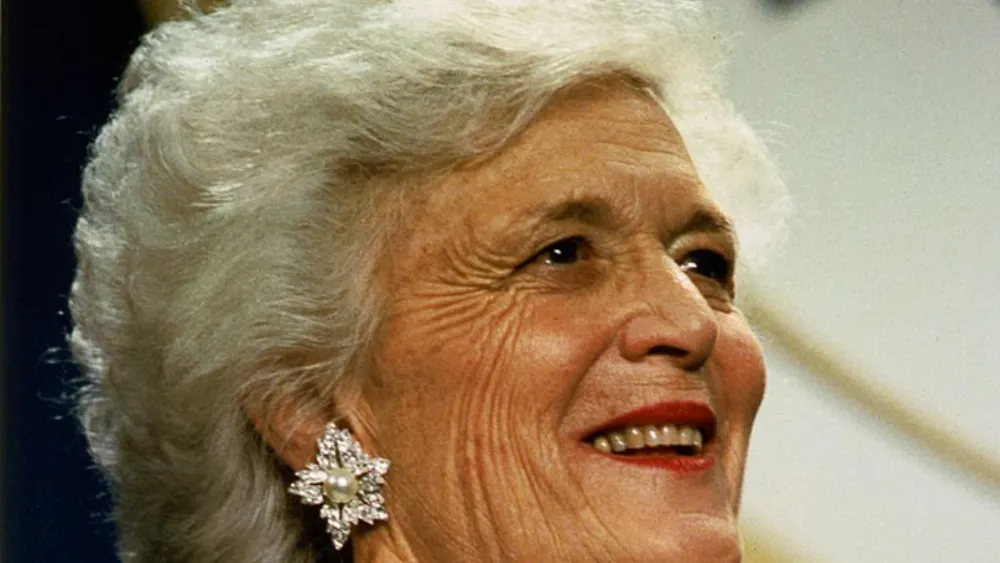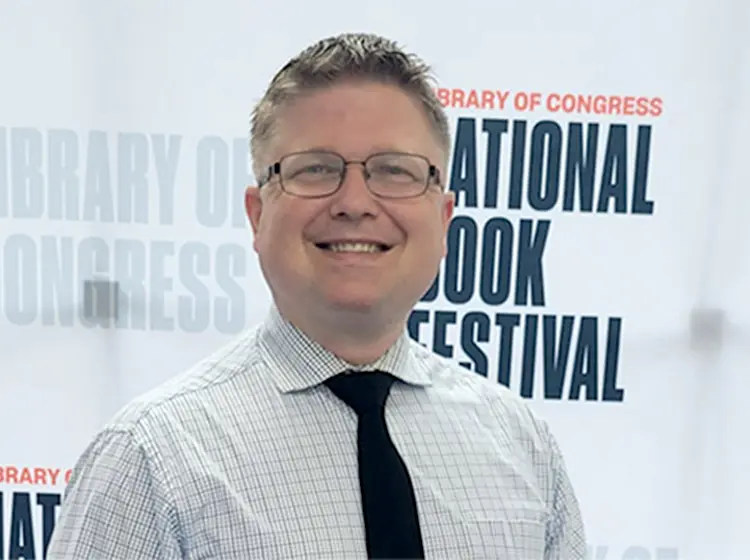Barbara Bush, a woman of exceptional distinction, made an enduring impact as the wife and mother of U.S. presidents. Her legacy extends beyond political corridors, defined by love, literacy advocacy, and leadership.
City Roots and Family Ties
Barbara’s journey began on June 8, 1925, in the bustling heart of New York City. Her parents, Pauline and Marvin Pierce, played pivotal roles in shaping the trajectory of her early years.
Pauline, the daughter of an Ohio Supreme Court justice and a committed conservationist as chairwoman of the Garden Club of America, instilled in Barbara a deep appreciation for environmental stewardship.
Meanwhile, Marvin, a distant descendant of the 14th President of the United States, Franklin Pierce, and the president of the McCall Corporation, introduced her to the world of publishing.
Growing up in the tranquil suburb of Rye, New York, Barbara’s formative years unfolded in an Episcopalian household.
Her education commenced at Rye’s Milton Public School and Rye Country Day School, setting the stage for her academic journey.
In 1940, she began a new chapter by attending Ashley Hall, a prestigious boarding school in Charleston, South Carolina.
During these early years, Barbara’s character blossomed. Moreover, she emerged as an athletic and witty young woman driven by a profound love for literature.
This passion for reading would become a defining thread woven throughout her life. As she navigated her formative years, the influences of her family and the educational experiences at boarding school laid the foundation for the extraordinary path ahead.
Barbara and George’s Love Story
In 1941, 16-year-old Barbara met George H.W. Bush during a Christmas break at a dance. They fell in love, but George’s service in World War II briefly separated them.
They kept their connection alive through letters and, in January 1945, got married. Starting their life together, they faced challenges, like moving to Texas and California for George’s oil business work after graduating from Yale in 1948.
Sadly, in 1953, their second child, Pauline, passed away from leukemia, leaving Barbara and George heartbroken.
Despite these tough times, the Bush family grew with the arrival of sons George W., Jeb, Neil, Marvin, and daughter Doro.
Barbara played a crucial role in supporting George’s career in the oil industry and politics. Her dedication to family and a strong sense of responsibility became defining features of Barbara’s life, shaping an extraordinary journey with her husband.
California Dreams and Personal Trials
In their early married years, the Bushes relocated to Texas in 1948 for George’s oil industry job. Barbara adapted to a new life in Odessa, seeking independence from familial expectations. The move cultivated maturity, fostering self-sufficiency for the couple. They later moved to California, navigating various towns for George’s work. During this time, Barbara faced personal challenges, dealing with the loss of her mother and giving birth to her second child, Robin. Returning to Texas, the family settled in Midland, where George started an oil business. Amidst the responsibilities of motherhood, Barbara’s strength shone, enduring the tragic loss of Robin and subsequently expanding their family.
Barbara Bush: Politics and Parenthood
In the 1960s, Barbara Bush embraced political life alongside her husband George. Learning campaign dynamics during his run for the chairmanship of the Harris County Republican Party, she developed a liking for it.
Moving to Washington, D.C., in 1966, she balanced raising her children with active engagement in political and social events. The 1970s brought electoral defeats and personal challenges, yet Barbara played a pivotal role, adapting to her distinctive white hair.
Her journey included roles like the United States ambassador to the United Nations and adapting to the challenges of George’s position as the U.S. Director of Central Intelligence. Despite setbacks, Barbara’s resilience and evolving priorities remained evident.
Barbara Bush’s Impact as Second Lady
As the Second Lady of the United States from 1981 to 1989, Barbara and George Bush embraced the unique challenges of the role. They revitalized the vice presidential residence, where Barbara hosted over a thousand social events, disregarding traditional seating orders to create diverse interactions.
However, tension with First Lady Nancy Reagan unfolded, limiting Barbara’s involvement in White House social events. Passionate about literacy, she engaged in various programs but avoided overshadowing Nancy.
Barbara’s global impact included visits to 65 nations. A self-deprecating humorist, she played a key role in George’s reelection campaign, balancing her image as a devoted wife and mother amid political challenges, controversies, and campaign strategies.
Barbara Bush: A Legacy of Literacy, Advocacy, and Grace
During her time as First Lady from 1989 to 1993, Barbara Bush made a lasting impact on the White House.
Taking office at 63, she embraced the historical significance of the residence, adorned in designer gowns. Despite grappling with Graves’ disease, her daily routine involved charity work, White House pool exercises, and leisurely walks along Pennsylvania Avenue.
Striking a balance between a desire for privacy and a skeptical stance toward the press, she navigated her role with poise. An initially controversial commencement speech at Wellesley College became the first nationally broadcast live address by a First Lady.
Barbara’s commitment went beyond ceremonial duties; she actively promoted literacy through radio programs and authored a best-selling children’s book. Additionally, she was a vocal advocate for adult literacy programs, underscoring the significance of literacy at all life stages.
Her influence even touched on AIDS awareness, where she urged for stronger patient rights and understanding.

Barbara Bush: Life Beyond the White House
After leaving the White House in 1993, Barbara and George Bush returned to Houston. They faced challenges adjusting to a less privileged lifestyle. Barbara reacquired everyday skills like cooking and driving. Despite initial financial constraints, she earned money through speaking fees and a best-selling memoir, “Barbara Bush: A Memoir.” In 1994, her sons, George W. and Jeb, sought political office. Though successful, the political attacks against her sons caused her considerable stress. George W. approached her for advice on his presidential campaign in the 2000 election, eventually becoming the 43rd President of the United States.
Barbara and George’s Life in Retirement
In their later years, Barbara and George divided their time between Kennebunkport and Houston. Health issues marked this period, with surgeries and controversies, including a misunderstood miscarriage anecdote. In 2015, she officially joined the Episcopal Church. Initially against son Jeb’s presidential bid, she later supported him during the 2016 primaries, critical of Donald Trump. Her declining health led to a fall in 2018, choosing comfort care over treatment. Barbara Bush passed away on April 17, 2018, at 92, due to COPD and heart failure. Her funeral, adhering to her wishes, was brief, and she rests beside her daughter, Robin, at the George Bush Presidential Library.
Lessons from Barbara Bush
Barbara Bush’s life offers invaluable resilience, love, and commitment lessons. From her city roots in New York to her family ties and education, she cultivated a deep appreciation for literature and environmental stewardship.
Her enduring love story with George H.W. Bush, surviving the challenges of World War II and personal loss, exemplifies steadfast dedication. Moreover, her later years underscore the importance of adapting to change, facing health issues with courage, and maintaining a deep sense of family.










